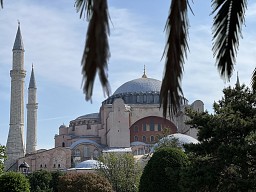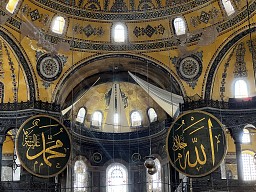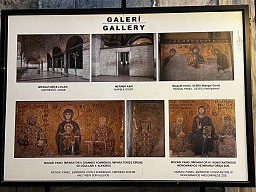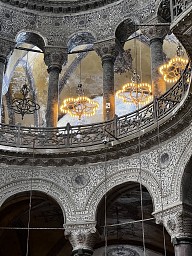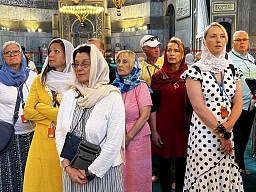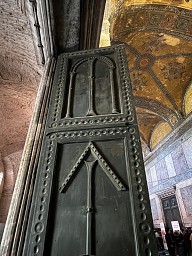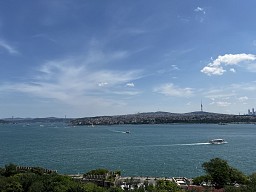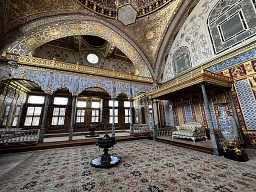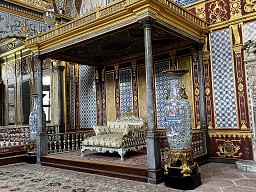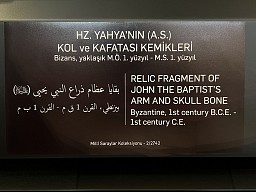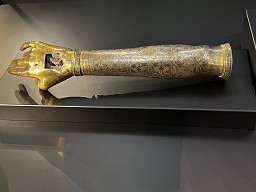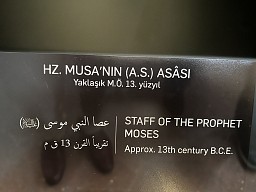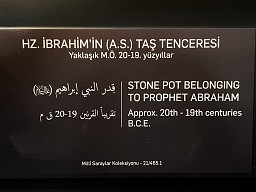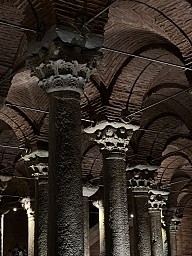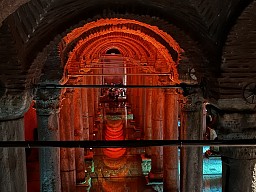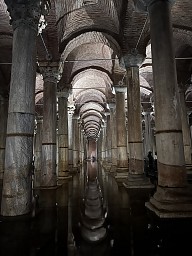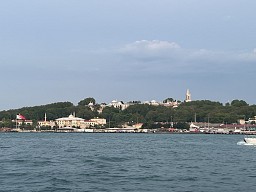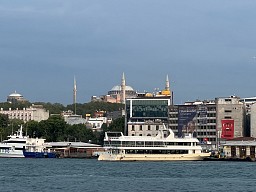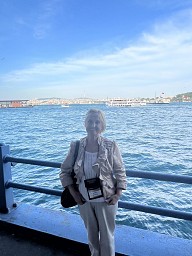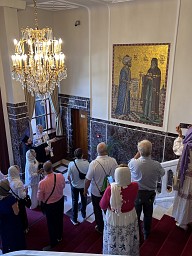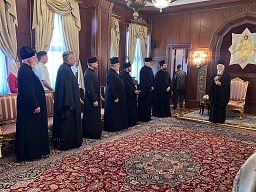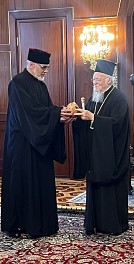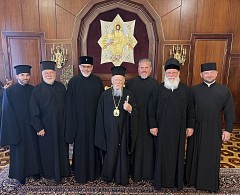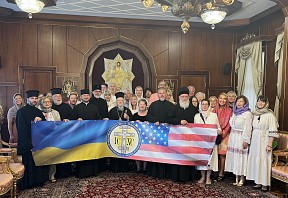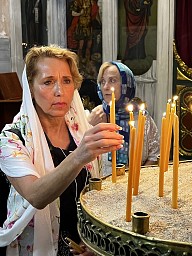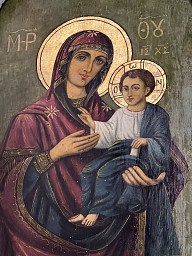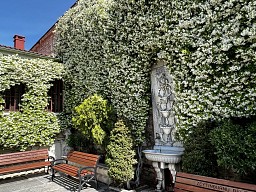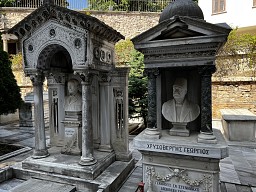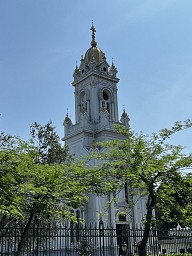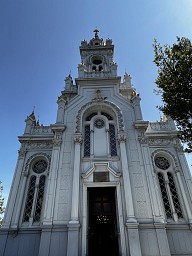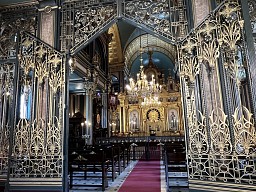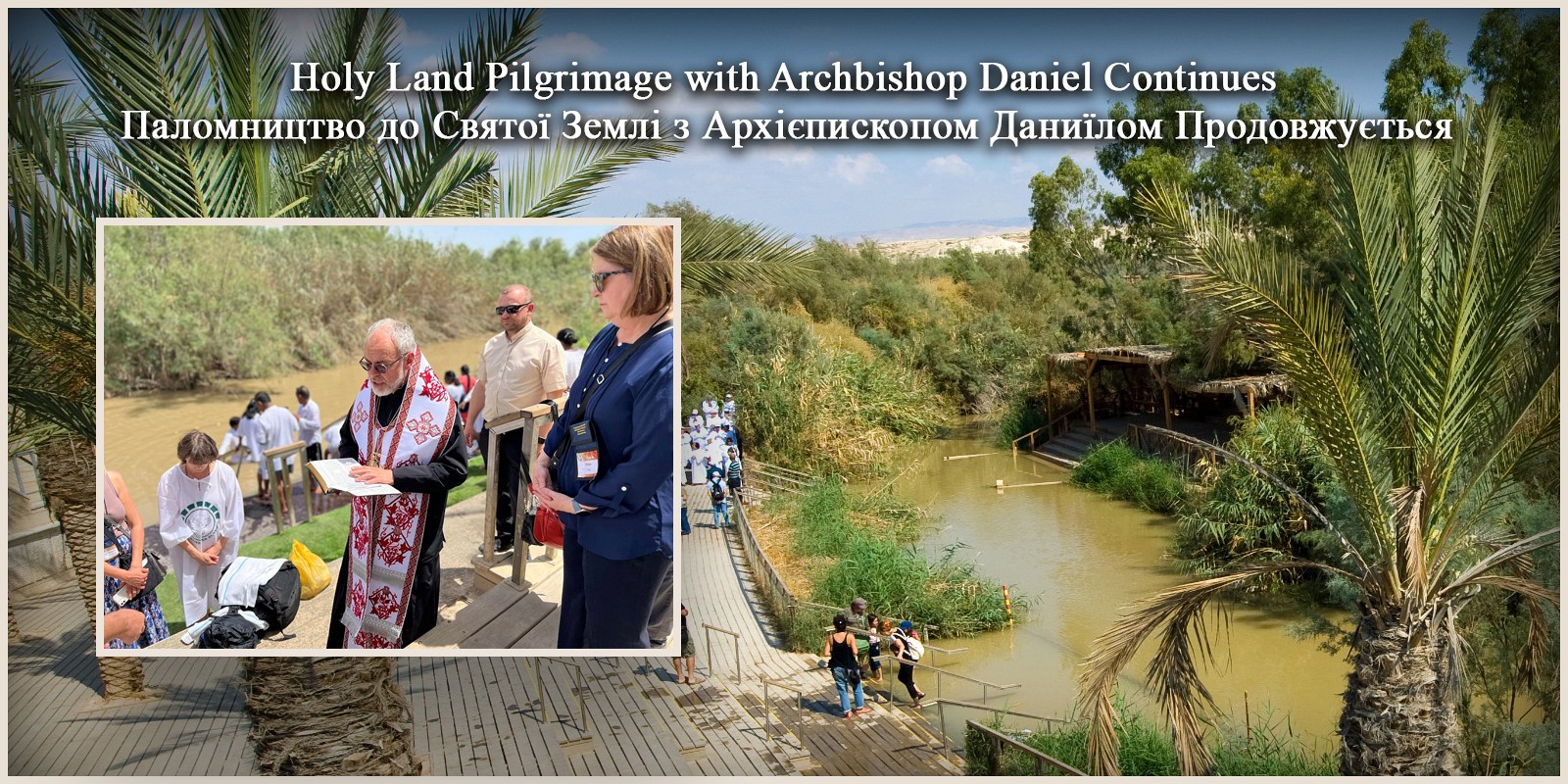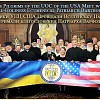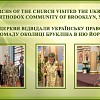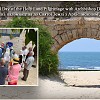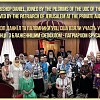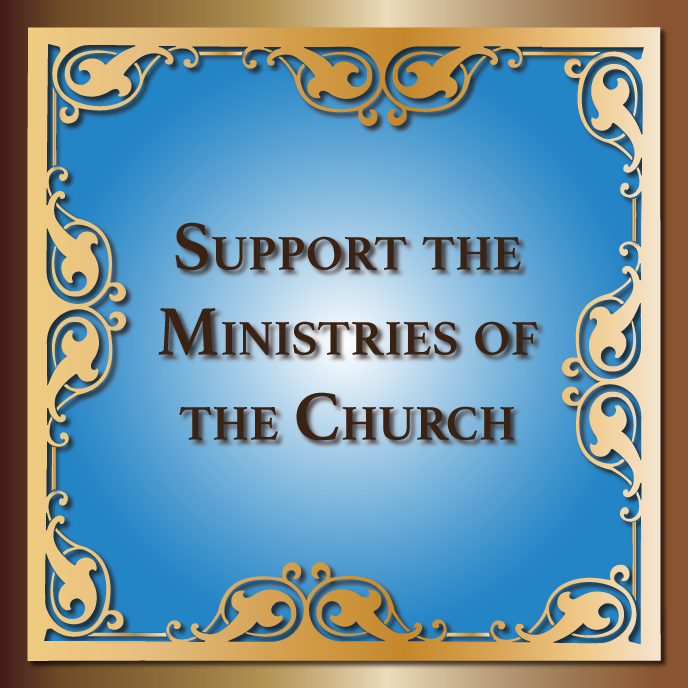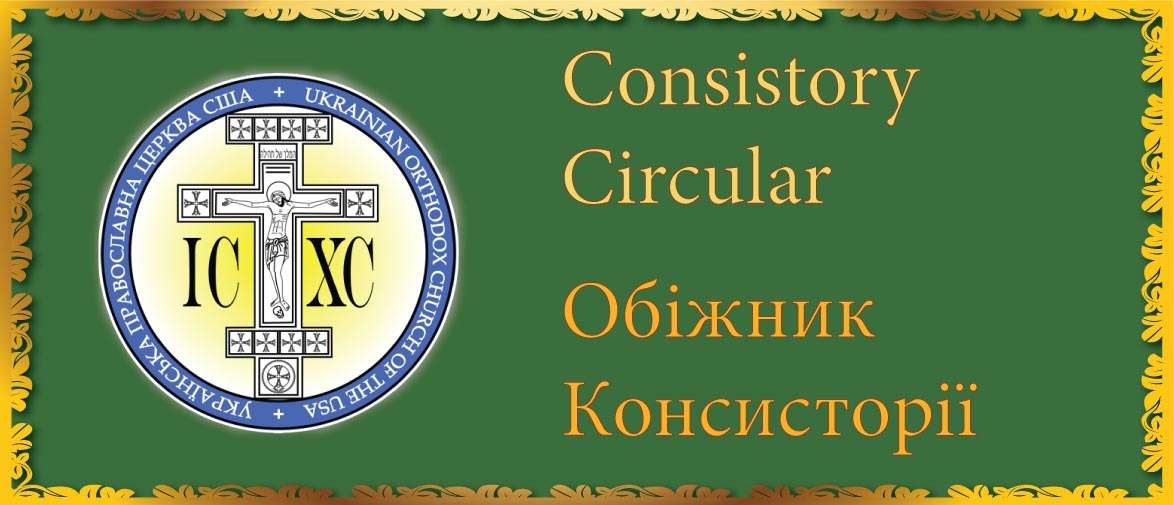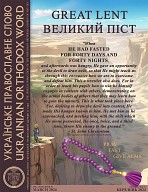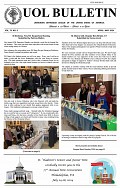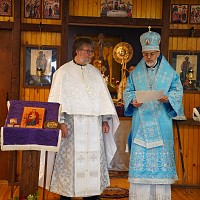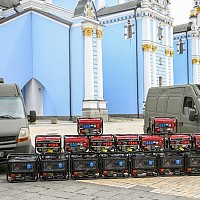The adventure continued late in the week as the pilgrims from the Ukrainian Orthodox Church, guided by His Eminence Archbishop Daniel, arrived in the “Queen of Cities” - Constantinople. Because of its historical location as the capital of the former Eastern Roman (Byzantine) Empire and its role as the Mother Church of most modern Orthodox Churches, Constantinople holds a special place of honor within Orthodoxy and serves as the seat for the Ecumenical Patriarch, who enjoys the status of Primus Inter Pares (First Among Equals) among the world's Eastern Orthodox prelates and is regarded as the representative and spiritual leader of Eastern Orthodox Christians.
The first stop for the group was the jewel of the city, the grand church of the Hagia Sophia. The first Hagia Sophia was built in 360. It was a wooden-roofed basilica, built on the site of a pagan temple. When its roof was burned by a fire in 404 AD and destroyed mostly in a second fire in 414 AD, a great believer of orthodoxy Theodisius II dedicated another church in 415. The structure was destroyed in Turkish riots rebuilt by Emperor Justinian in 537 AD. For the construction of Hagia Sophia, old pagan idols and edifices were plundered. Marbles were brought from distant places such as France, Egypt, Marmara Island. Justinian is remembered as the founder of Hagia Sophia. However, he was named as ‘’the builder of the world” by Procopius for building more than 100 churches in both Constantinople and the provinces of Asia after his conquests in both the west and the east. He is also said to have converted 70.000 persons during his reign.
After conquering Constantinople in 1453, Ottoman Sultan Mehmed II immediately went to the Hagia Sophia and ordered that after serving as an Orthodox Church for 916 years it be converted into a mosque. Immediately the faces of the icons were plastered over, and later in the 18th century the entirety of the Christian mosaics were covered by the Muslims.
As the group walked through the massive plaza surrounding the church, they paused in a small courtyard, peppered with bits and pieces of ancient ruins – lintels, monuments, pieces of old columns littered the grounds. While some of the group sat down upon them to rest, the others marveled at the detailed images carved into stone. In fact, some of these were parts of Theodisius’ original church building, including a long slab of marble with 12 sheep representing the twelve apostles of Christ.
Regrouping the pilgrims walked up an ancient stone walkway and entered the 1,480 year old church which had survived hundreds of earthquakes throughout history. Walking through the narthex, through the Emperor’s Gate (once reserved strictly for entry of the emperor and purported made from the wood of Noah’s Ark) past the tall marble columns, the group found themselves gazing up in wonder, at the large dome. The narrow, closely spaced windows at the base of the dome were edged in gold which shined and shimmered and made it appears as if the dome was floating above the structure.
In the apse of the Church the group gazed up at the oldest mosaic in the church of the Birth-Giver of God sitting upon a bejeweled throne with the Christ Child in her lap. Original iconography was destroyed during the iconoclasm period, and only after its defeat in 843 AD, the mosaics were created throughout the church. Gazing to the left the pilgrims could view the remnants of the mosaic icon of the Archangel Gabriel, with Archangel Michael to the right.
Upon exiting the church the group walked through another set of ancient wooden doors, and quickly turned left to pause at the ancient baptismal pool, where once again they prayed and softly sang.
It was difficult to walk away from such a magnificent and ancient church. Hearts were heavy as the once Orthodox church was now being utilized as a mosque. However, the group was confident that one day it would once again be a church where the faithful would praise and glorify the Holy Trinity.
With a parting glance from a distance the pilgrims marveled at the size of the Hagia Sophia, and that it had withstood so much drama, political, religious, and environmental, and yet still stood to this day. The church’s survival gave credence to the old tradition that states that during the construction of the church, the workmen came upon some building dilemma and did not know how to proceed. They left their tools and decided to seek advice elsewhere on how best to solve the problem. To ensure nobody stole their tools while they were absent, they directed a boy to stand guard at the church and not allow anyone to enter. While the boy was there alone, a man came up to him and explained the solution to the problem. The boy was amazed and wished to run and tell the engineers, but he was afraid to leave the church unattended, lest the tools be stolen, and he be blamed. The man told him to go, and that he would stand in his place and keep guard over the church until the boy returned. When the boy reached the engineers and explained the solution he was told, everyone marveled at the wisdom of the resolution, certain that no mere man would have been able to come up with this. Therefore, they deduced that the “man” who had spoken to the boy was no man, but an angel. This meant that the angel was there guarding the church in place of the boy. The engineers and craftsmen told the boy to never return to the church, thereby ensuring the angel would continue to stand guard. To this day it is believed that the angel still stands guard over the church and that is why it has survived so many disasters and will assuredly be a place of Christian worship once again.
The group next visited the Sultan’s Palace. For 400 years the Topkapi Palace served as the royal residence of the Ottoman Empire from 1478 to 1856 AD. 30 Sultans had ruled from the palace, which inhabited up to 4,000 individuals, including a harem of 300. In the courtyard of the Palace the group paused at the Hagia Eirene (Divine Peace) built by the Emperor Constantine in 337 AD. This is the oldest church in Constantinople.
Entering the huge Palace grounds the group marveled at tile pavilions, gurgling fountains, lavishly decorated galleries, and ornate ornamentation. The highlight of the visit were the relics of St. John the Baptist. In one of the galleries, set in a golden covering, lay the forearm and hand of the Forerunner. The holy relics, as they are preserved today, were placed in a medieval metal case modeled in the shape of an arm with realistic artistical accents. This case was the work of a Venetian workshop, as the case is inscribed with two silver marks: one representing the Venetian lion and the other mark is a Maltese Cross – sixteenth century style, the era when the Order of Hospitallers became the Knights of Malta.
The fingers of the golden hand are giving a blessing, and the gold encasement has several inscriptions. One around the wrist states “the hand of John the Baptist”, and another on the index finger refers to the sermon of St. John depicting Christ as the Messiah, “Behold, the Lamb of God.” What a blessing to be able to gaze upon the hand of the one who baptized Christ and foretold of the arrival of the Messiah.
Other pieces of great interest were the turban of Joseph (the Joseph of the OT whose brothers sold him into slavery in Egypt), and the Staff of Moses (that parted the Red Sea).
Next the group descended below ground to the large and dark Basilica Cistern, located 500 feet southwest of the Hagia Sophia. The enlarged cistern provided a water filtration system for the Great Palace of Constantinople and other buildings in the city and continued to provide water to the Topkapı Palace after the Ottoman conquest in 1453 and into modern times. Walking along the raised wooden platforms the dark cavernous interior was lit with spotlights which illumined the pillars holding up the ceiling. The place looked eerie with the dim lighting, and as they paused to look at the inverted medusa head pillar, which is purported to have come from a pagan temple which had previously stood on this site, they caught slight movement in the water. To their amazement, in this dark atmosphere, with water constantly dripping from the vaulted ceiling, they saw schools of ghostly pale carp eerily swam in the black waters below.
The final stop of the day was at the Grand Bazaar, which is one of the largest and oldest covered markets in the world, with 61 covered streets and over 4,000 shops. No wonder it is referred to as the first shopping mall of the world, with construction starting in 1455 AD. Entering the brightly lit market with vaulted ceilings, the group made plans to meet back at the entrance in an hour’s time. Everyone dispersed in various directions. They walked past window displays of gold and precious gems, vendors selling carpets, all manner of clothing, art, chessboards, teas, spices, lotions, and potions, with a few shops that sold Orthodox icons and church goods. The hour flew by as the group reassembled, their arms filled with purchases and made their way back to their hotel to pack their bags, as tomorrow afternoon they would depart for home.
Before heading to the airport, the pilgrims had one more important stop – at the Ecumenical Patriarchate. The seat of the Ecumenical Patriarchate of Constantinople at Phanar has been here on the Golden Horn since 1601, a century and a half after Constantinople was conquered from the Byzantines in 1453 and became Istanbul.
His All-Holiness Bartholomew I, elected in 1990 to be the 270th Archbishop of Constantinople - New Rome and Ecumenical Patriarch, claims primacy over the 300 million Orthodox Christians of Churches in North America, the United Kingdom, Australia, and most of Europe.
Walking through the courtyard the faithful entered the St. George church. In the Narthex they lit candles and prayed before entering the darkened nave of the church. They found the interior of the church lavishly decorated, with gilded plaster work, crystal chandeliers, and a five-tiered iconostas. The most precious objects were the patriarchal throne, which is believed to date from the 5th century, some rare mosaic icons and the precious relics of Saints Gregory the Theologian and John Chrysostom which are located in reliquaries along the side wall.
The group exited and turned right to head towards the Patriarchal offices. Along the way they walked past the St. Peter’s Gate, where in 1821 Patriarch Gregory V was executed. He was hung in his full vestments from the gate and remained hanging for three days. His execution was at the hands of Mahmud II who blamed him for not suppressing the Greek War of Independence. That Gate has not been opened since.
Entering the administrative offices, the pilgrims were ushered into a side room where they were privileged to meet with His All Holiness the Ecumenical Patriarch Bartholomew. Here he greeted his visitors warmly, especially pleased at the visit of His Eminence Archbishop Daniel. Having spent some time with the group, and exchanging gifts, His All Holiness bestowed his blessing upon each individual, inviting them to remain, and attend Vespers.
Having walked in the footsteps of Christ all throughout the Holy Land, and having visited the center of the Church today, the pilgrims were overwhelmed with emotions and feelings which would take weeks to digest, ponder, and understand. The weary travelers bid farewell as they boarded their plane back to New York, physically exhausted, but, spiritually awakened.
|
| |||||||||||||
